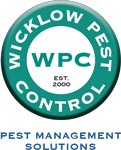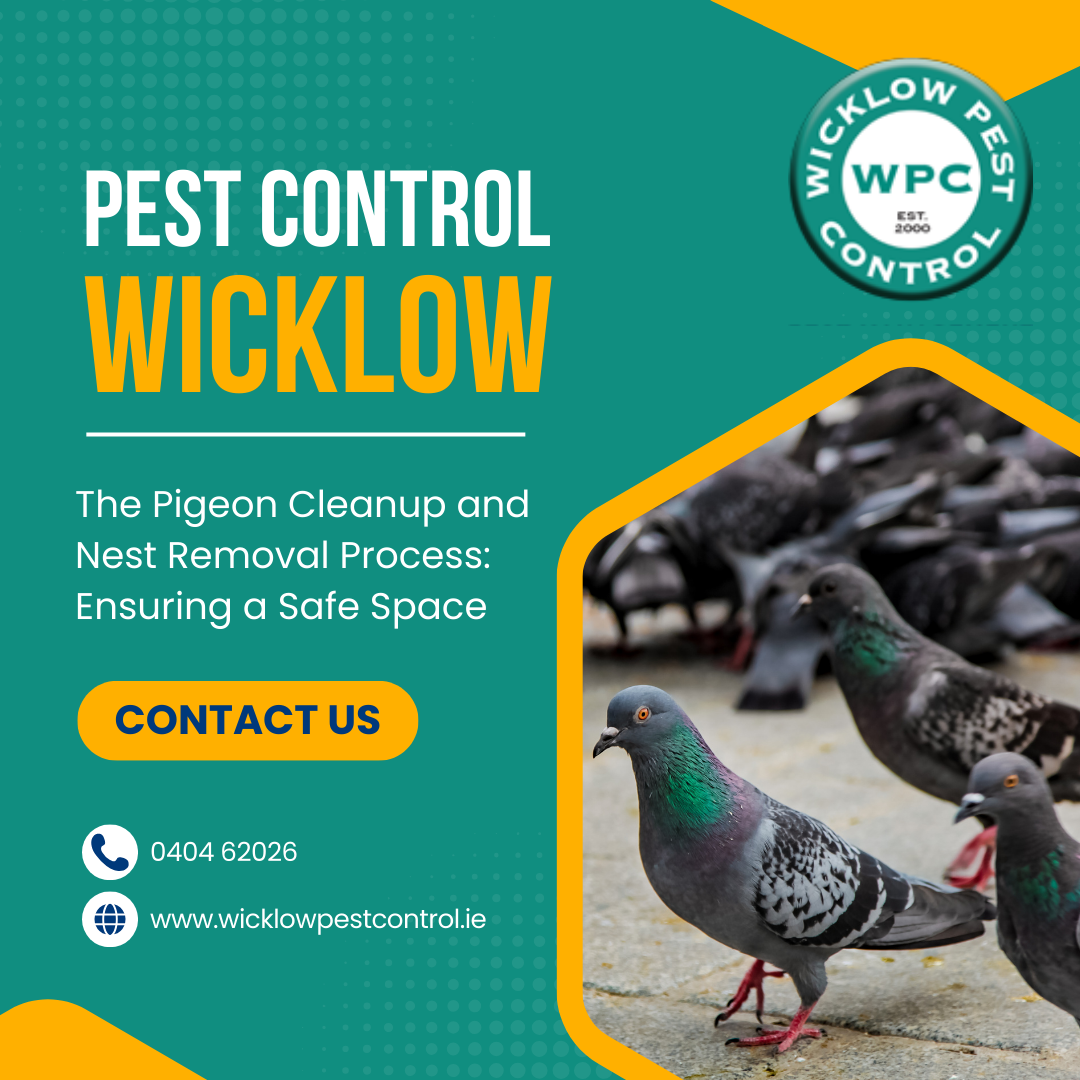Pigeons are often viewed as an innocuous part of urban life. However, when these birds choose to nest in or around your property, they can become a significant nuisance. Their droppings can pose health risks, and their nests can lead to structural damage. Understanding the pigeon cleanup and nest removal process is essential for maintaining a clean and safe environment. This blog explores the critical steps involved and why enlisting professional services, like those offered by Wicklow Pest Control, is crucial for effective pigeon management.
Why Pigeon Cleanup and Nest Removal Are Necessary?
Pigeon droppings are not just unsightly; they can also lead to various health issues, including respiratory diseases. Additionally, nests made of twigs, feathers, and debris can block drainage systems, leading to water damage. The acidic nature of pigeon droppings can corrode building materials, resulting in costly repairs. Therefore, timely and thorough cleanup and nest removal are vital for health and property maintenance.
The Cleanup and Nest Removal Process
- Comprehensive Risk Assessment Site Survey (In compliance with the Wildlife Act)
The first step in dealing with a pigeon infestation is a thorough inspection of the property. Professionals will:
- Identify High-Risk Areas: Look for signs of pigeon activity, such as droppings and nests, in areas like rooftops, balconies, eaves, and other sheltered spots.
- Assess Damage: Evaluate the extent of any damage caused by droppings or nests, including potential blockages in gutters or drainage systems.
- Safety First
Cleanup of pigeon droppings and nests involves health risks, so safety is paramount. Here’s what professionals do:
- Personal Protective Equipment (PPE): Technicians wear appropriate PPE, including gloves, masks, and protective clothing, to prevent exposure to harmful pathogens found in pigeon waste.
- Risk Assessment: They also assess the work area for hazards, such as unstable structures or slippery surfaces, to ensure a safe working environment.
- Nest Removal – In compliance with the National Parks Service Guidelines
After safety measures are in place, the next step is to remove pigeon nests:
- Careful Nest Identification: Professionals locate nests, which are often hidden and made from various materials.
- Gentle Dismantling: Using specialised tools, they carefully dismantle nests to avoid injury and minimise damage to the property. This includes removing not just the nests but also any debris that may harbour parasites or pathogens.
- Droppings Cleanup
Cleaning up pigeon droppings is one of the most critical parts of the process:
- Specialised Equipment: Technicians use HEPA-filter vacuums and other specialised equipment to safely remove droppings. This method prevents the dispersion of dust and pathogens during removal.
- Proper Disposal: The collected droppings are disposed of in accordance with local regulations to minimise environmental impact.
- Cleaning and Disinfecting
Once droppings and nests are removed, the area must be thoroughly cleaned:
- Surface Cleaning: Professionals will wash and scrub all affected surfaces, ensuring the removal of all residues.
- Disinfection: A thorough disinfection process is employed using specialised cleaning solutions that eliminate pathogens and bacteria associated with pigeon waste. This step is crucial for protecting human health.
- Implementing Preventive Measures
After the cleanup, it’s essential to implement measures to prevent future infestations:
- Identifying Entry Points: Professionals will look for gaps, holes, or other potential entry points that pigeons might use to access the property.
- Installing Deterrents: To prevent pigeons from returning, various deterrents such as spikes, nets, or repellents may be installed. These measures create an environment that is less appealing to pigeons.
- Ongoing Monitoring
Pigeon cleanup and nest removal is not a one-time event but rather a process that requires ongoing attention:
Regular Inspections: Professionals often recommend scheduled follow-up inspections to monitor for signs of returning pigeons.
Maintenance Advice: Property owners will receive advice on maintaining a pigeon-free environment, including securing trash, avoiding feeding birds, and keeping outdoor areas clean.
The Importance of Professional Services
While some may consider tackling pigeon issues on their own, professional assistance is crucial for several reasons:
- Expertise: Professionals have the training and experience to identify problems that an untrained eye might miss.
- Safety: Handling pigeon droppings can expose individuals to harmful pathogens; professionals are equipped to manage these risks safely.
- Comprehensive Solutions: Pest control experts, like Wicklow Pest Control, not only remove current issues but also implement effective prevention strategies, reducing the likelihood of future infestations.
Pigeon cleanup and nest removal are essential for safeguarding your property and health. By understanding the process and the importance of professional intervention, property owners can take proactive steps to mitigate pigeon-related issues. If you’re facing a pigeon problem, reach out to a licensed pest control service like Wicklow Pest Control to ensure a thorough and effective cleanup, leaving you with a safe and healthy environment.
Wicklow Pest Control is here to help. With our expertise and commitment to a quality service, please don’t hesitate to contact us.
Wicklow: 0404 62026
Dublin: 01 2005900
Kildare: 045 395395

